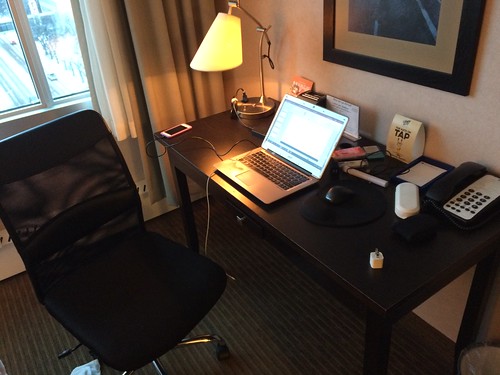 One of the questions I get asked more frequently (by either my own students, and by others who reach out to me at workshops or via email) is whether they should specialize or not during their PhD, and sometimes earlier in their careers. As I’ve written elsewhere, I’m a very eclectic person. I work across multiple disciplines (political science, human geography, international relations, public policy, public administration).
One of the questions I get asked more frequently (by either my own students, and by others who reach out to me at workshops or via email) is whether they should specialize or not during their PhD, and sometimes earlier in their careers. As I’ve written elsewhere, I’m a very eclectic person. I work across multiple disciplines (political science, human geography, international relations, public policy, public administration).
I straddle several fields, from comparative public policy and policy transfer to social movements to water governance to waste and discards management. I am methodologically diverse and use multiple theories in my work and as such, I encourage my own students to explore across disciplines, theories, methods and approaches.
When I did my undergraduate in chemical engineering, I did not want one specialty, so I went for two: food science and engineering, and chemical plant design. I did the same for my PhD (human geography and political science), and even there, I did other things: international relations, public policy/administration (on the political science side) and economic/urban/environmental geography (on the human geography side).
Methodologically, I’m also quite diverse: I do mixed methods, but I have a very strong ethnography slant. I also do experiments (particularly field experiments), archival research, spatial analysis and social network analysis.
Which takes me back to the question itself.
I am not 100% sure if one should JUST pursue one line of inquiry or several. If one should just specialize in ONE area of scholarship or broaden the scope. For a lot of people in academia, it’s hard to fit me and my work into a mold, e.g. I’m not just a political scientist. I’m a public administration scholar to the PA/PM community. I’m a human geographer to the geography community. And I’ve even dipped my toes in economic anthropology and the sociology of consumption. That’s because my work on water insecurity and the informal mechanisms of waste governance is legible to, respectively, anthropology and sociology.
With my own undergraduate, Masters and PhD students, what I have done is that I’ve taught them multiple methods, but within a relatively well-bound area of scholarship (water conflicts, homelessness policy, care policy, older persons’ policy, food insecurity policy). Various methods/theories, ONE field.
I’m a senior professor now, so this “trying to fit me into a narrow box”, branding exercise is much less of a burden for my career, but I try to help my own students by helping them shape a trajectory that makes their work legible within a discipline & a field, while maintaining … a healthy interest in broadening their research interests down the road.
For example, two of my recent PhD graduates continue to do work on subnational water conflicts, but have moved away from the ones they did in their PhDs and started studying other cases. One of my Masters’ students is now moving on to doing a PhD and is thinking of ways to make his earlier research on homelessness broader, but still within the same topic (possibly using multiple methods, comparing different cases, etc.)
So, I don’t want to give advice, but if asked, my advice would be to seek advice from a broad range of scholars and look at what fits you best, particularly for whatever trajectory you want to pursue.

I don’t regret having broadened my work early in my career, but I am not sure whether it hindered or helped me progress. But again, I’m senior now and I have a permanent professorial job, and therefore I do not have to worry about this as much.
To summarize, only you know what you want to do, and the people who know you and whom you trust can give you sound(er) advice. Do whatever fits you best, though I always recommend, make your work legible to the communities you want to work with.






Recent Comments